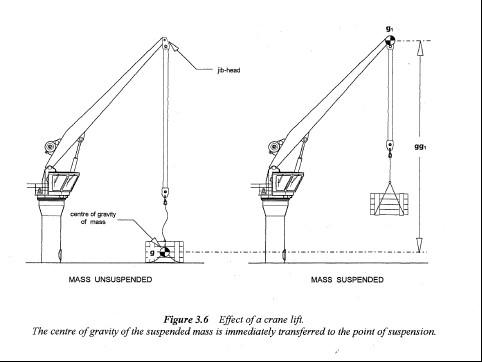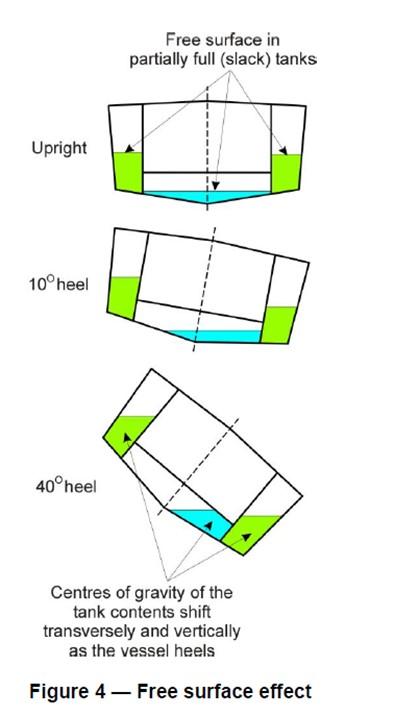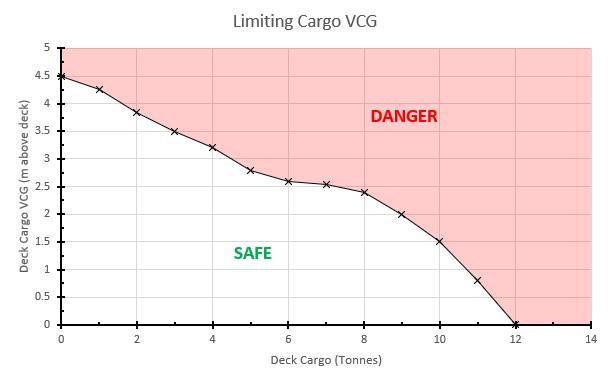On 1 June 2025, we introduced new requirements for safety management systems (SMS).
These changes affect all domestic commercial vessels. Find out what you need to do.
It is important to keep your barge stable to prevent it from capsizing and to protect the lives of those on board
Stability refers to the vessel’s ability to return to its upright position after being heeled over by wind, waves, or other forces such as lifting loads or adding cargo. The flat-bottomed shape of barges mean they have unique stability characteristics which needs to be considered when carrying loads and lifting weights.
Most barges are used to carry out work of a diverse nature like carrying cargo, for infrastructure work or as platforms for personnel to carry out specific works like crane, dredging or construction operations.
There are many instances where barges have been loaded or machinery embarked and operated where stability has been affected resulting in loss of cargo and equipment, foundering and/or serious injury or loss of life.
Deck Loads
Construction barges may carry a variety of deck cargoes such as building materials, wharfing piles, wheeled or tracked vehicles and contained liquid cargo.
Deck loads should be appropriately secured to prevent them shifting due to waves, weather, wake from other vessels or change in heel or trim due to lifting operations. The shifting of unsecured deck cargo can cause a barge to rapidly capsize and pose a risk to crew on board.
It is important to understand the maximum deck load that can be supported by the barge, both in terms of structure to prevent damage and for stability. The larger the load on a barge the less barge is above the water. The distance from the water surface to the deck is known as freeboard.
Construction barges should use maximum load freeboard marks to give a visible indication of permissible loading. The amount of freeboard remaining to the freeboard marks is a good indication of the load capacity remaining. The less barge there is above the water, the closer it is to sinking and the greater risk to the safety of the cargo and people on board.

Lifting operations
Construction barges may have a fixed crane or carry a mobile crane or excavator. This may be used to lift deck loads on and off the barge or move objects outside the barge.
Loss of stability is one of the key factors associated with serious crane incidents. Using cranes or lifting devices on a barge presents higher risks from land-based operations which must be considered and assessed as part of your risk assessment.
The sea state, weather and tide conditions need to be considered. Also, requiring risk assessment is the mooring arrangements for the barge, and ensuring the barge has adequate stability to carry out its intended operations.
When a weight is lifted by a crane, the centre of gravity of the lifted item rises to the point of lift on the crane. This can dramatically raise the centre of gravity of the barge/crane. This will lower the stability of the barge (imagine standing up in a canoe compared to sitting down and the resulting loss in stability).
If the item to be lifted was not already onboard the barge the freeboard of the barge will reduce, further reducing its stability.

Heel and trim
Deck loads should be loaded to ensure the heel and trim is even. Excessive heel or trim reduces the area of the barge in the waterplane area and it can quickly become unstable and capsize. It may also cause the down-flooding of water into spaces below deck.
Lifting operations can also affect heel and trim as can the loading and unloading of tracked or wheeled vehicles. The maximum lifting and reach limit will be reduced if the barge is not sitting even in the water. The distribution of weight during loading operations must be closely monitored.
Bilges must be checked regularly and kept dry as the flat bottom of a barge can create a significant free surface effect. A free surface (also known as a slack tank) is a body of water in a tank or a vessel that can slosh about.
The presence of water in the bilges when it has not been addressed in the stability assessment invalidates the assessment.

Stability assessments
Key to managing the risk of stability is having a relevant stability assessment from an accredited marine surveyor. This is required for all construction barges that have been approved to operate after June 2013, including non-survey barges if they have a crane, deck load or lifting device installed. This includes a mobile crane.
A relevant stability assessment is strongly recommended for all existing construction barges that were operating prior to June 2013 . It shows you are taking steps to meet your general safety duties and protect the safety of all those on board by ensuring that you will not generate a heeling movement that may endanger or capsize the barge or exceed the maximum safe loading for the barge. This stability assessment will ensure you are using the right sized barge for your crane reach and slewing impacts.
When you add a deck load, lift a load or use a mobile crane that hasn’t been considered in your stability assessment you will need to get a new stability assessment done. Remember that if it is not expressly indicated that the proposed loading is safe (or below the limits of the vessel) it must be assumed that it is unsafe until a stability assessment is undertaken and proven otherwise.
Key information to support stability assessment is the limited KG curve . Not all stability assessments will include such a curve but when present they provide a very simple and useful guidance.
The term KG refers to the distance from the vessel’s keel (K) to its centre of gravity (G). A limiting KG curve displays a line indicating the maximum height of the vessel’s vertical centre of gravity (VCG) for a given displacement. This can be further simplified for barges to display in terms of cargo mass and height above the deck. If the location of the centre of gravity for a given mass is below the curve this is a safe condition. A centre of gravity and mass above the curve is unsafe.

When using these tables and graphs it is CRITICAL to understand if it is displaying in terms of deck load above the deck or of the combined mass of the barge and deck load.
Limits of Stability – Wet feet
It is useful to understand what will start to happen when a vessel (barge or otherwise) is approaching the limits of its stability.
The first one is most useful to remember for barges. That is don’t get wet feet! This may appear at first to be trivial; however, getting wet feet is a sure sign that the barge is running out of stability and close to potential capsize, it relates to deck edge immersion.
As a vessel heels, the righting moment, the force trying to correct the heel and restore the vessel to an upright condition, increases. It continues to increase and provide an increasing leveling force until the deck edge is submerged. That is for every degree of heel a progressively higher force is provided to correct the heel until the deck edge is submerged.
When the deck edge is submerged this restoring force is still present however instead of increasing it decreases. For every degree of heel progressively less force is provided. However, if the force of heeling the vessel continues to grow the vessel will capsize. Imagine a crane on a barge lifting an item from a wharf. As the load comes onto the crane the barge starts to heel.
As more and more of the weight is supported by the crane the barge continues to heel. If the deck edge begins to submerge and water runs across the deck, before the full weight of the item is supported, the crane/barge will capsize.
Another key indicator that a vessel is running out of stability is for it to feel ‘tender’. A tender vessel is one where the centre of gravity is sufficiently high for it to be close to its limit of stability. A tender vessel will tend to feel a bit ‘drunken’ it will roll slowly and to a high angle of heel. It will feel less stable underfoot. A vessel in this condition will have limited reserve stability such at an outside heeling force, such as a large wave, crane lift or cargo movement may cause it to capsize.
Diagram showing how stability is lost after the barge heel reaches the down flooding angle.

In summary, to manage the risk of stability you should:
- have an up to date and relevant stability assessment
- know maximum deck load and load barge to maintain even heel and trim
- don’t exceed maximum load freeboard marks
- keep bilges dry
- consider sea state, wind, weather and tide conditions when conducting lifting operations
- consider your centre of gravity, the lower the better
- don’t get wet feet!